
RA = 02:49:44.6, Decl = +71:45:11
Season = Nov 09
B = 08.76, V
= 08.17, R = 7.78, I = 7.57, J = 7.08, K = 6.76,
B-V = 0.59 (Barbieri, 2007)
HJDo = 4459.69987
(45) & P = 21.21688 (44) day (as listed in Schneider's
Extrasolar Planets Encyclopaedia)
HJDo = 4459.69954
(60) & P = 21.2163717 (19) day (AXA fit, see below);
or better yet: HJDo = 4671.86325 (45) &
P = 21.2163717 (19) day
Depth = 6.5 ±
1.0 mmag (C,V,R-bands)
Length = 3.08 ±
0.10 hr
Fp = 0.18 ±
0.05, F2 = 0.78 ± 0.10
This is a difficult object to observe because the depth is
small (< 7 mmag) and the period is long and uncertain (21.2
days). At least it's bright. So far it appears that the period should
be shortened to 21.21652 days. Tonny Vanmunster has an intriguing
OOT light curve that shows a transit when none were expected (2008.05.11).
Keep this object high on your observing list.
Short et al (2008) published (http://fr.arxiv.org/abs/0803.2935)
a possible detection of a "second planet" (HD 17156c) in an outer
orbit that perturbs the transiting plant's (planet "b") transit times
by significant amounts. Every 333 days the mid-transit times should
"jump" about 3 minutes. This should be observable using amateur telescopes
provided several transits are observed after the jump (or more than
one observer measures the same transit after a jump). Recent measurements
of mid-transit times are incompatible with the predicted "second planet"
transit timing variation (TTV) and a slightly shorter period is compatible
with measured TTV. (Thanks, Peter McCullough, for pointing out that the
present TTV is inconsistent with the Short et al "second planet" TTV.)
More recently, Jose Fernandez used the TransitSearch
Systemics program to "solve for" the presence of exoplanet "d"
in this solar system. This hypothesized exoplanet is supposed to
have a mass of 0.02 times Jupiter, is in an innser orbit with a 1.23-day
period, and could produce a transit with depth of 1.6 mmag. There's more
info on it at http://brucegary.net/AXA/TransitSearch/TransitSearchLC.htm#6
My position is that radial velocity measurements must have systematic
errors that haven't been accounted for and there is no evidence for any more
planets in this system.
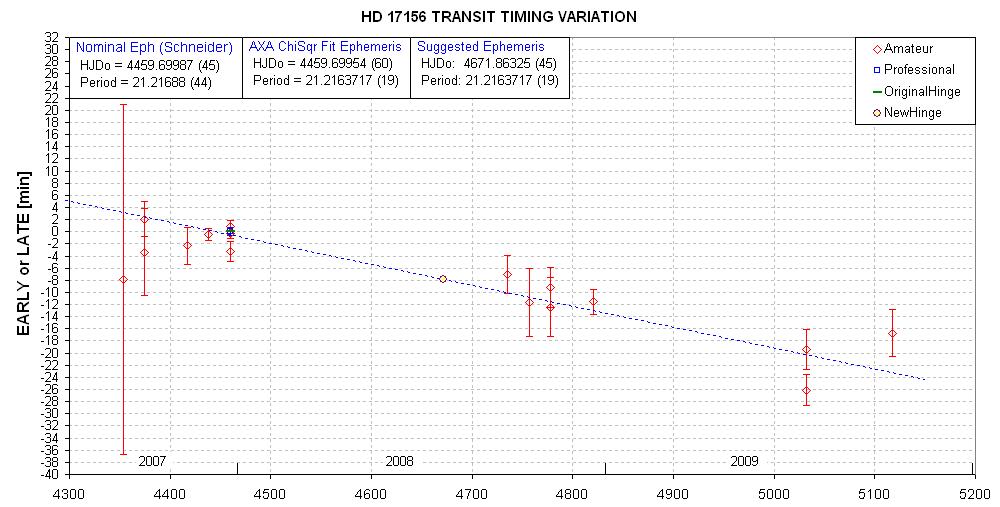

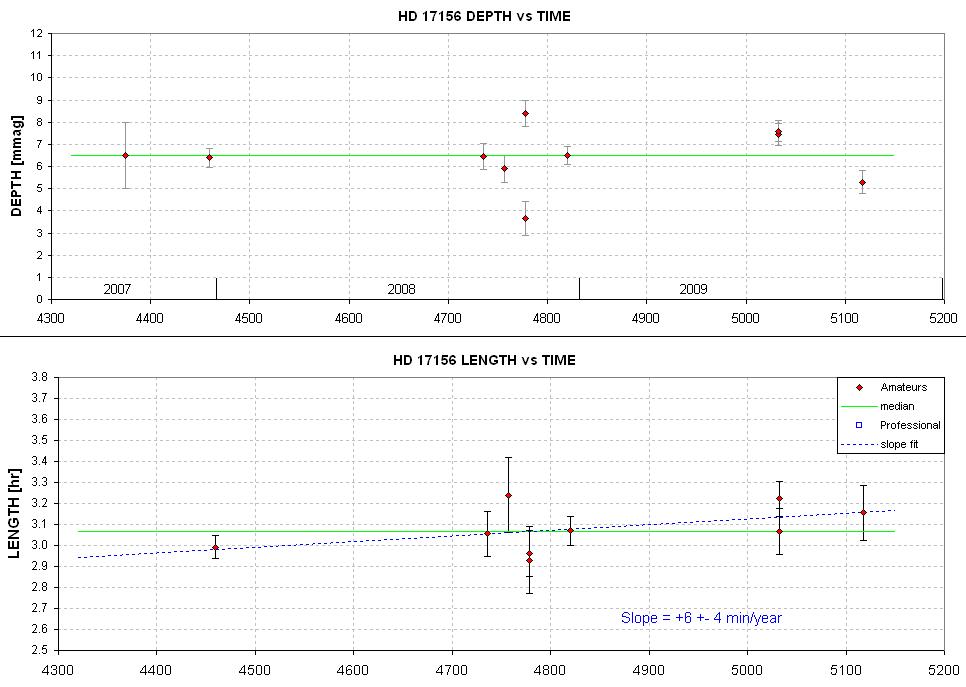
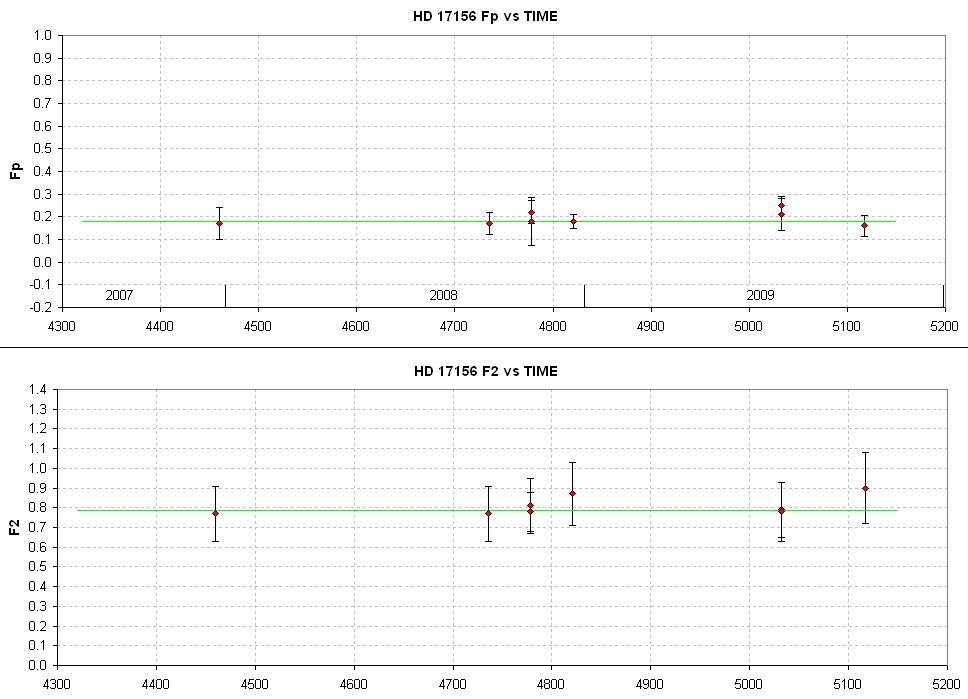
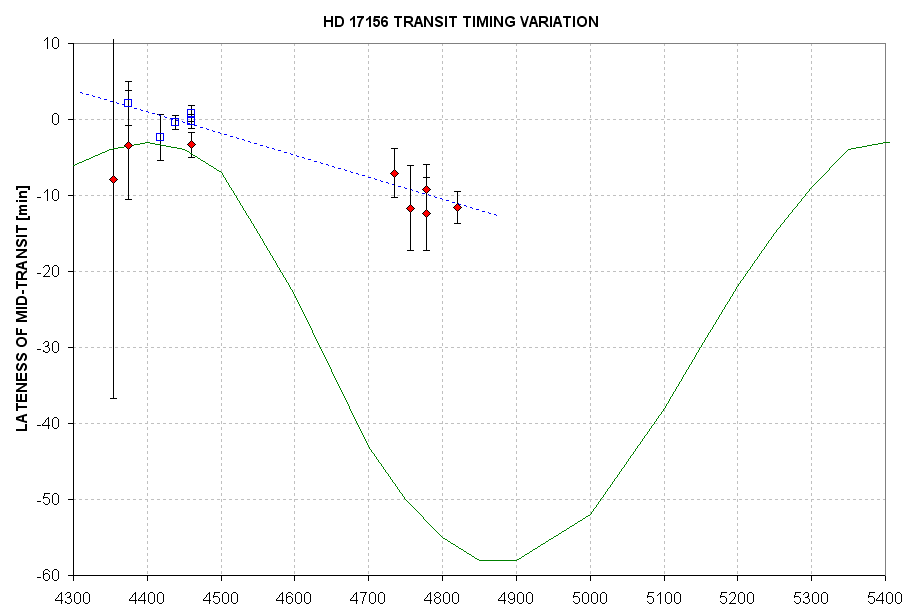
Comparison of observed mid-transit times with
prediction (green) by Short et al (2008) that involves another planet
perturbing HD 17156b and the superior fit of the simple period adjustment
(dashed blue).
The conclusion from the above plot is that a simple period
adjustment is required for HD 17156b and the case for a "second planet"
to account for radial velocity measurements is diminished.
Table of professional observations
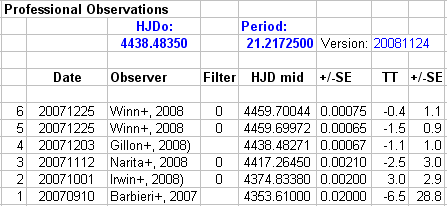
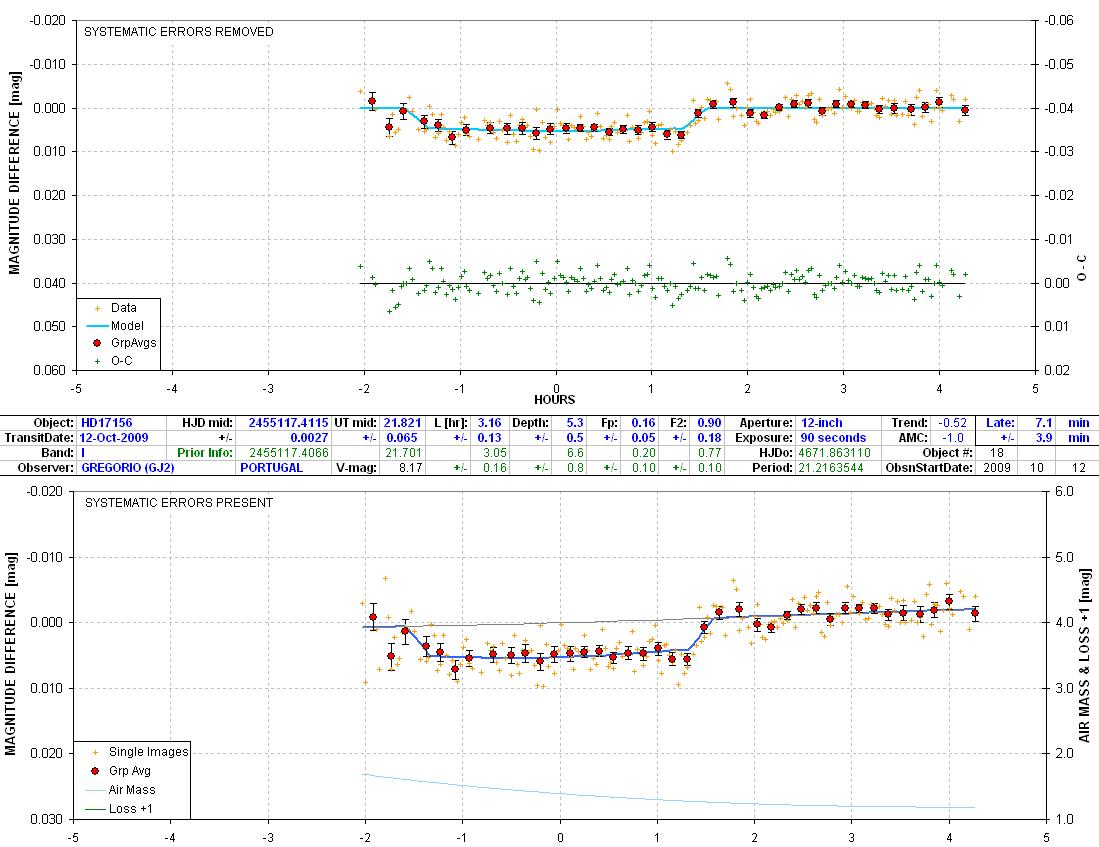
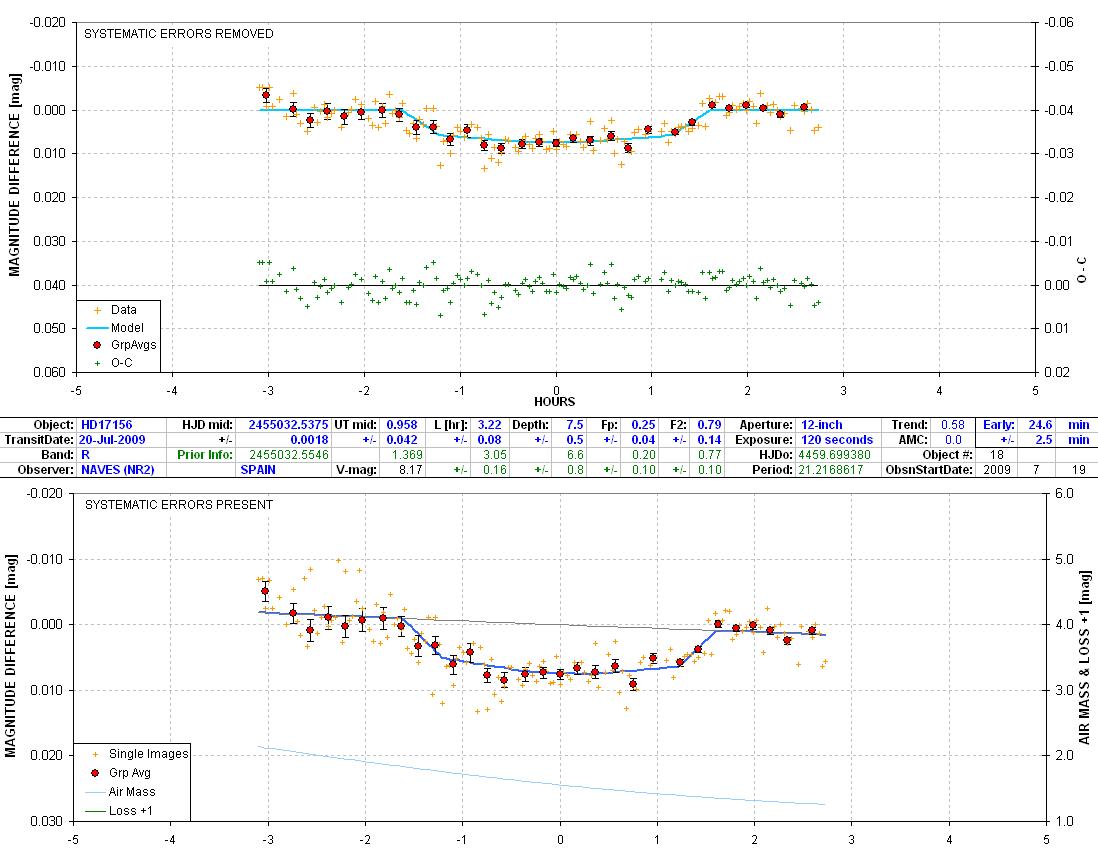
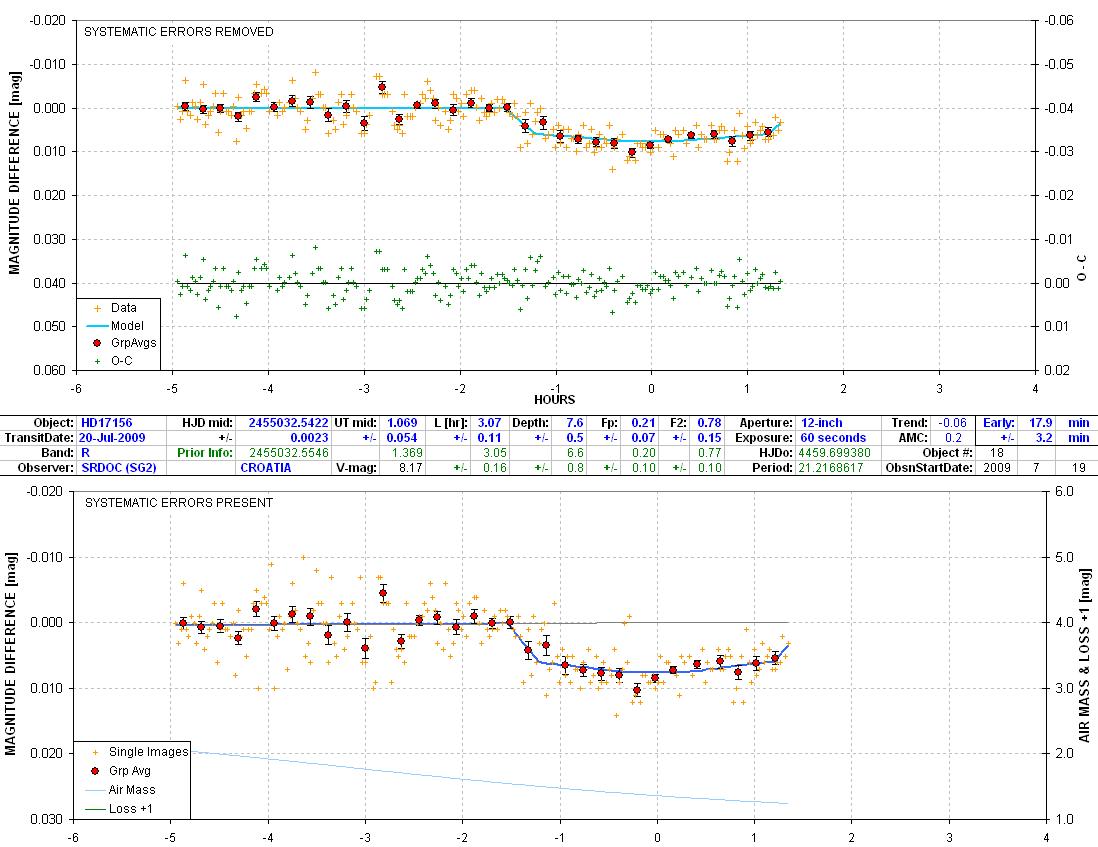
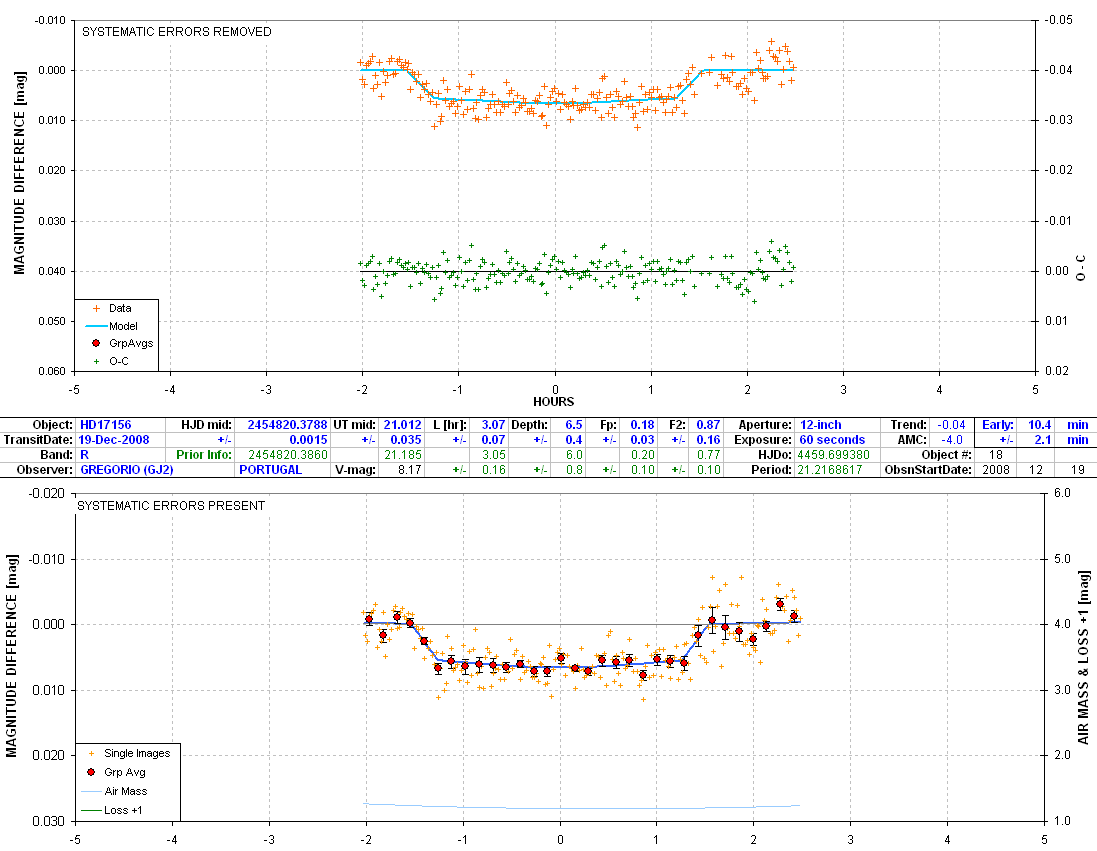
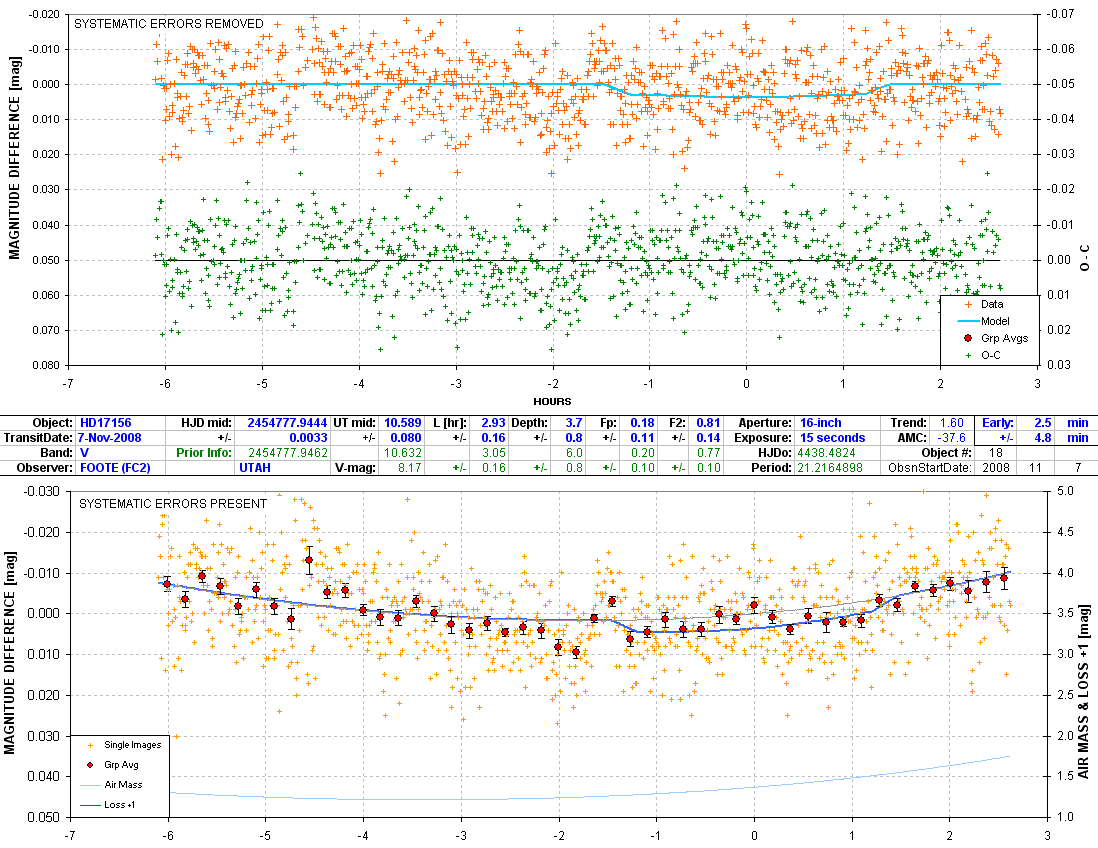
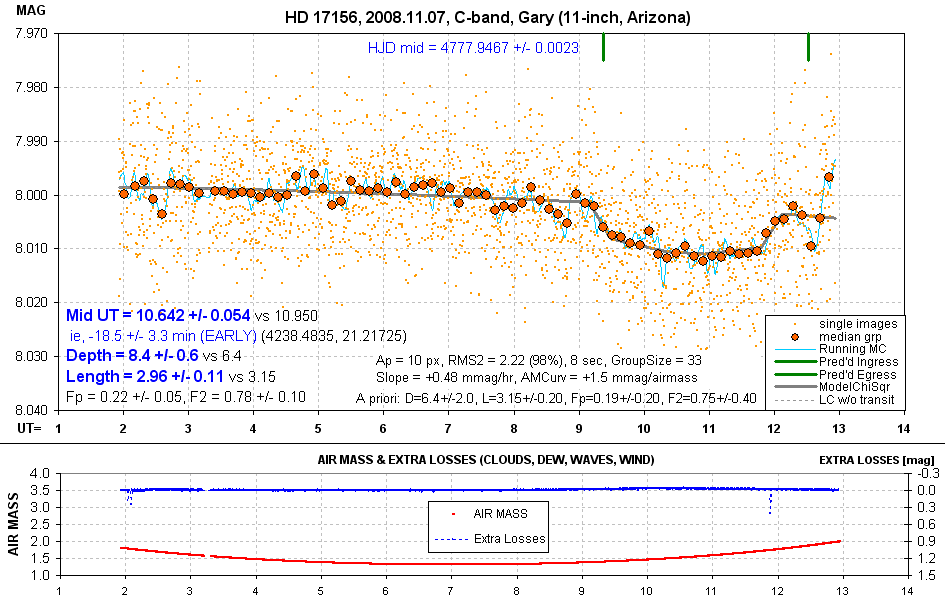
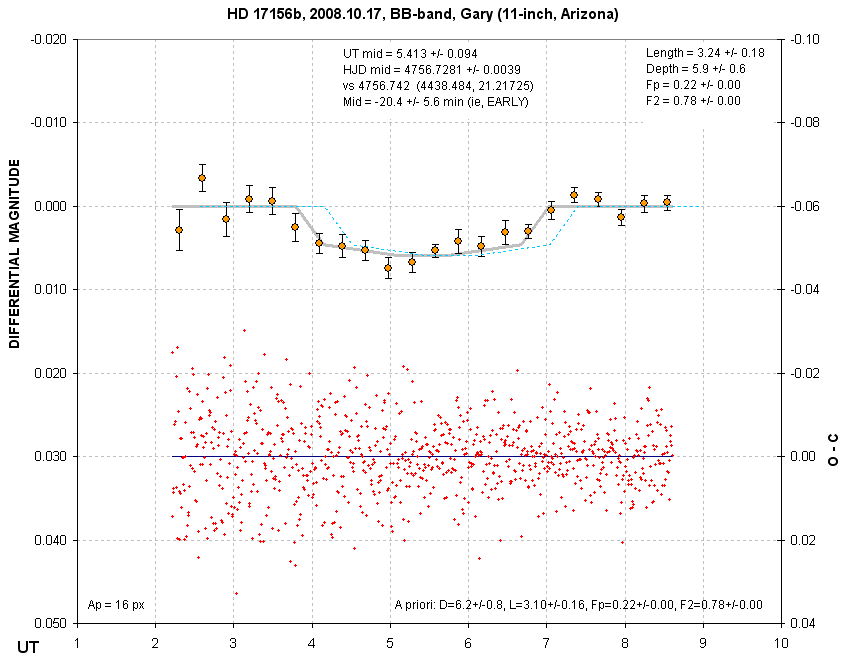
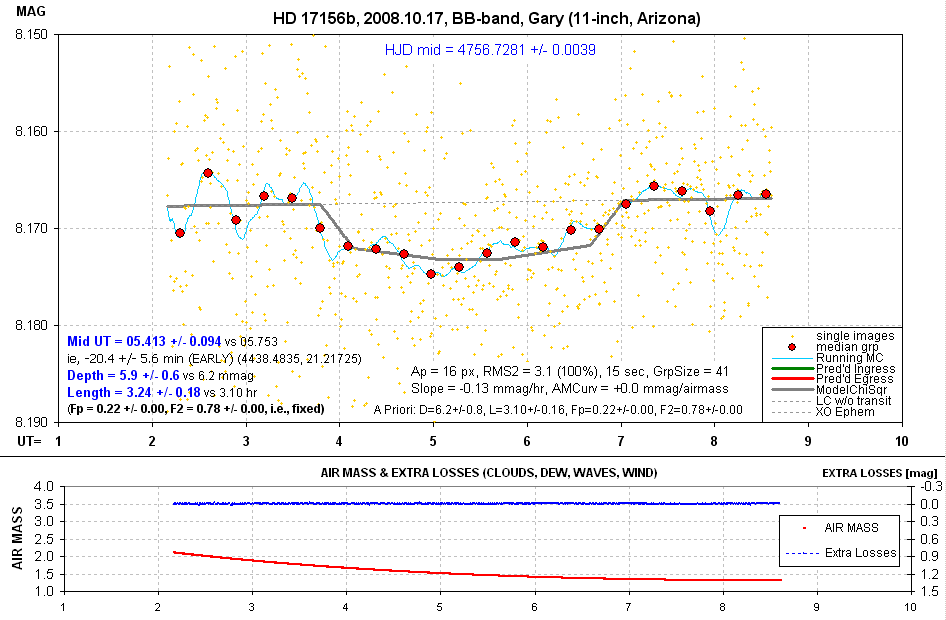
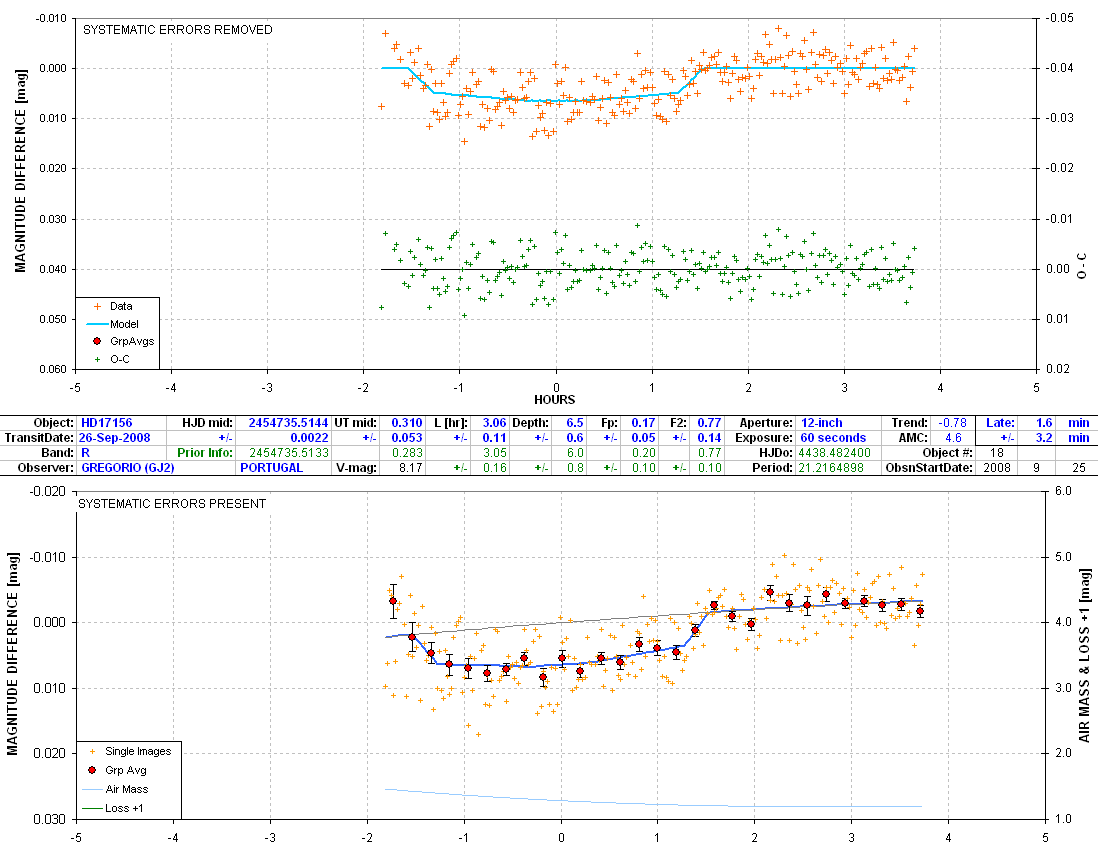
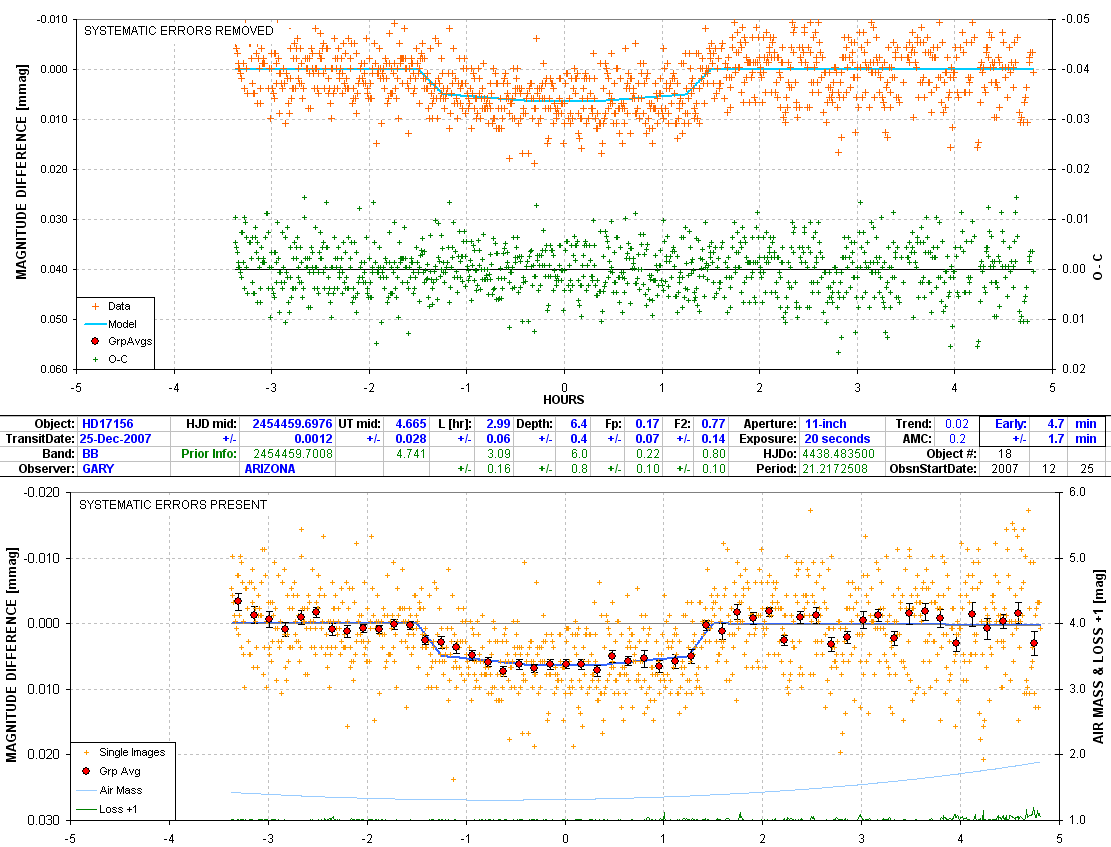
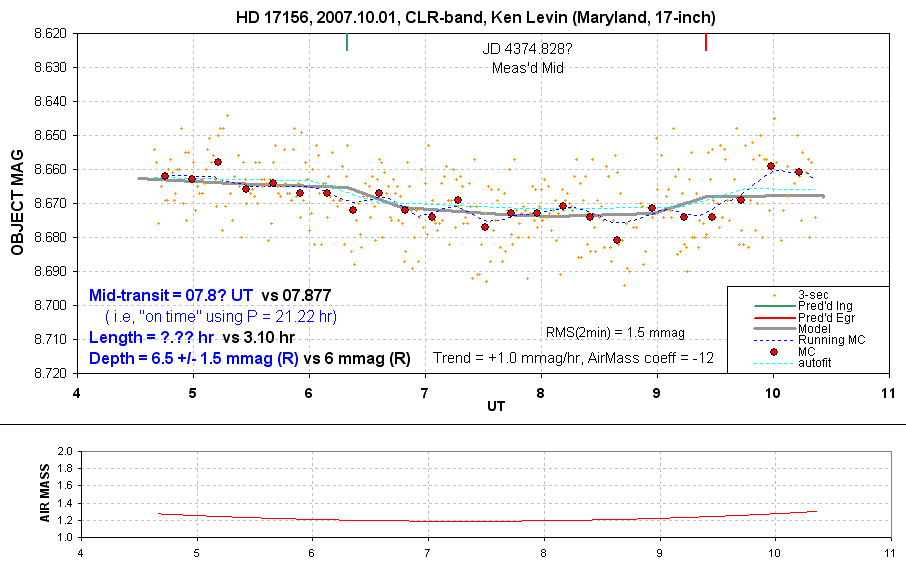
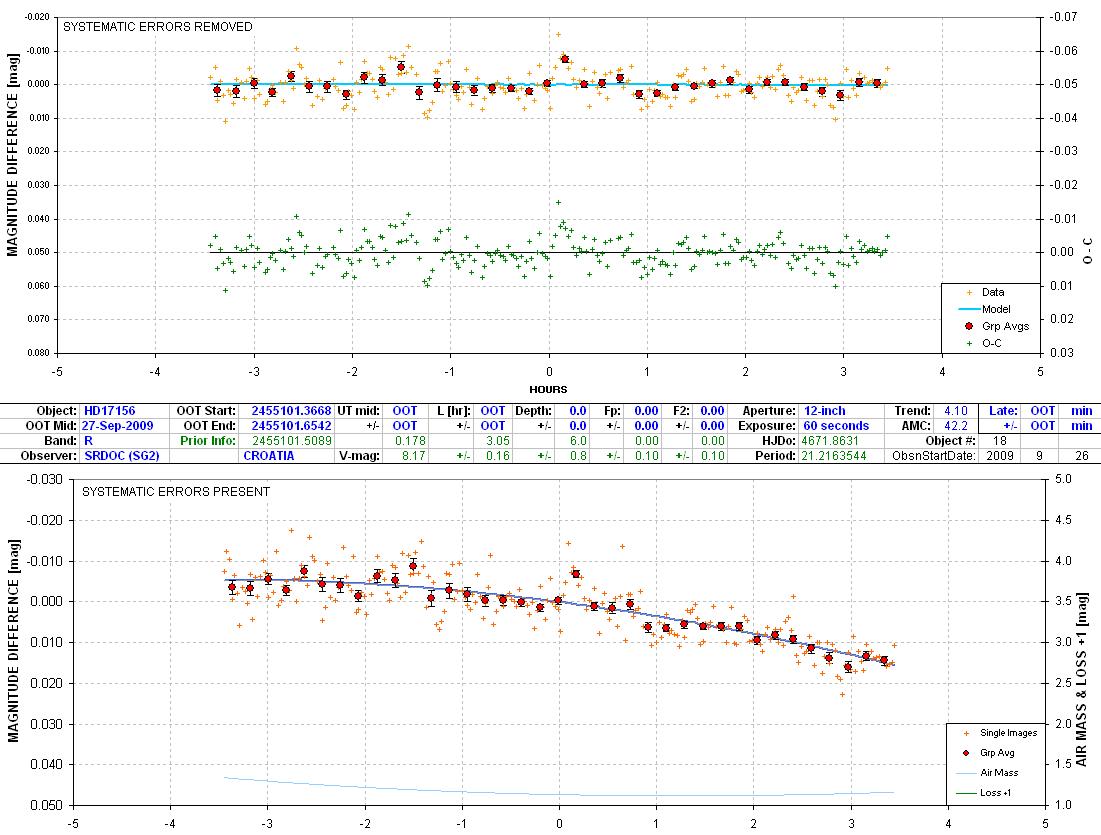
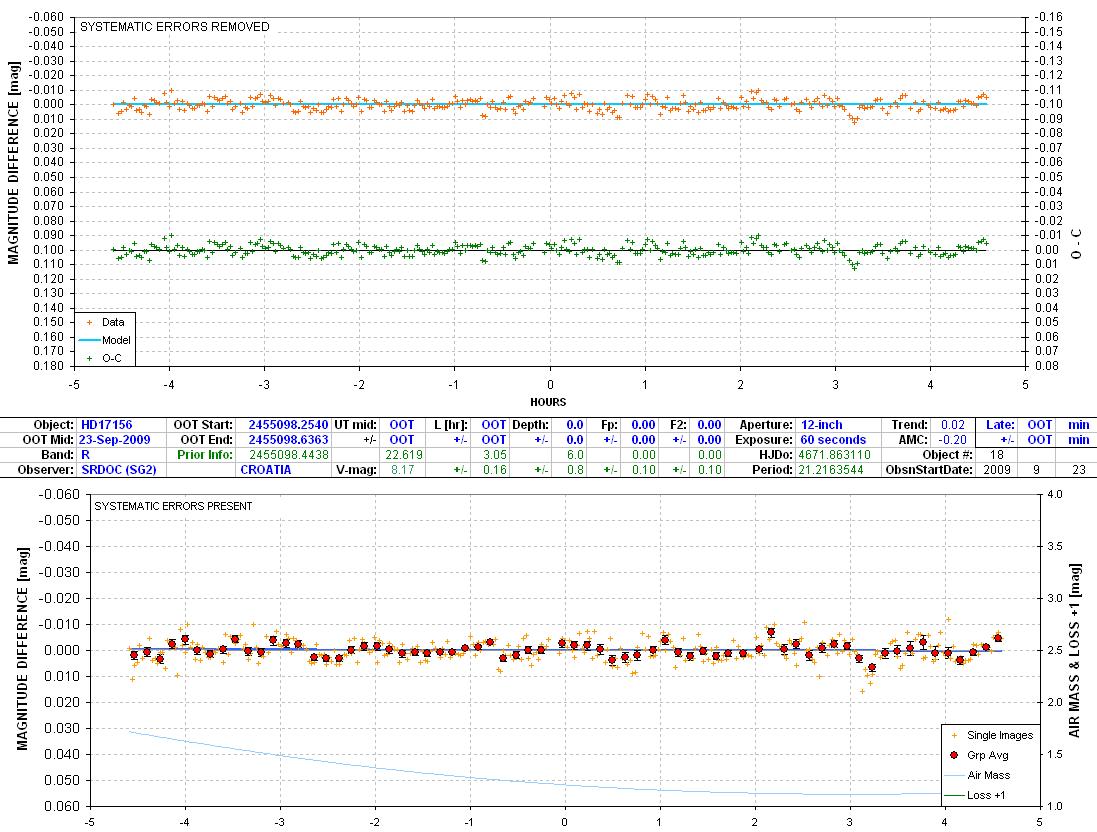
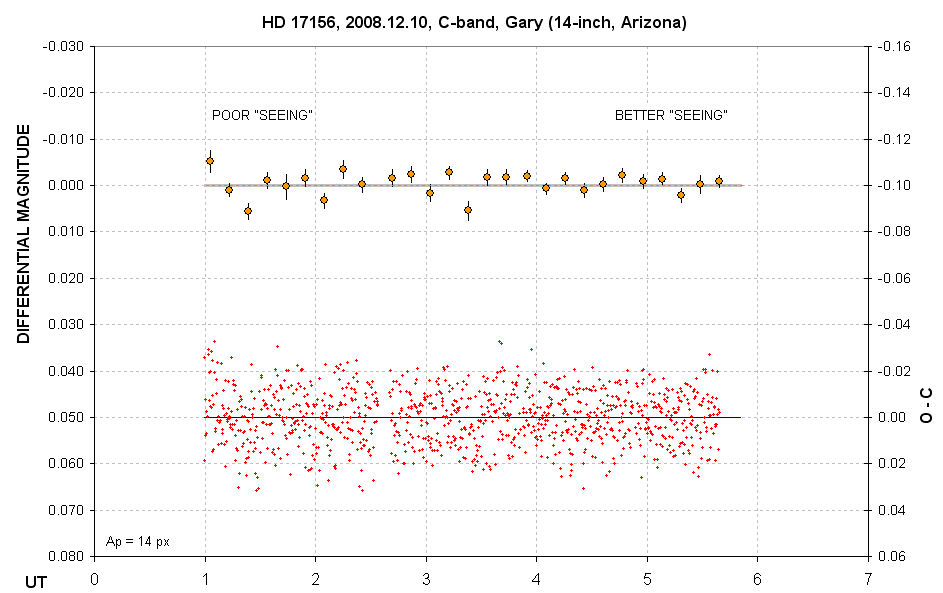
This exoplanet system is interesting enough that observing
at any time is potentially useful.
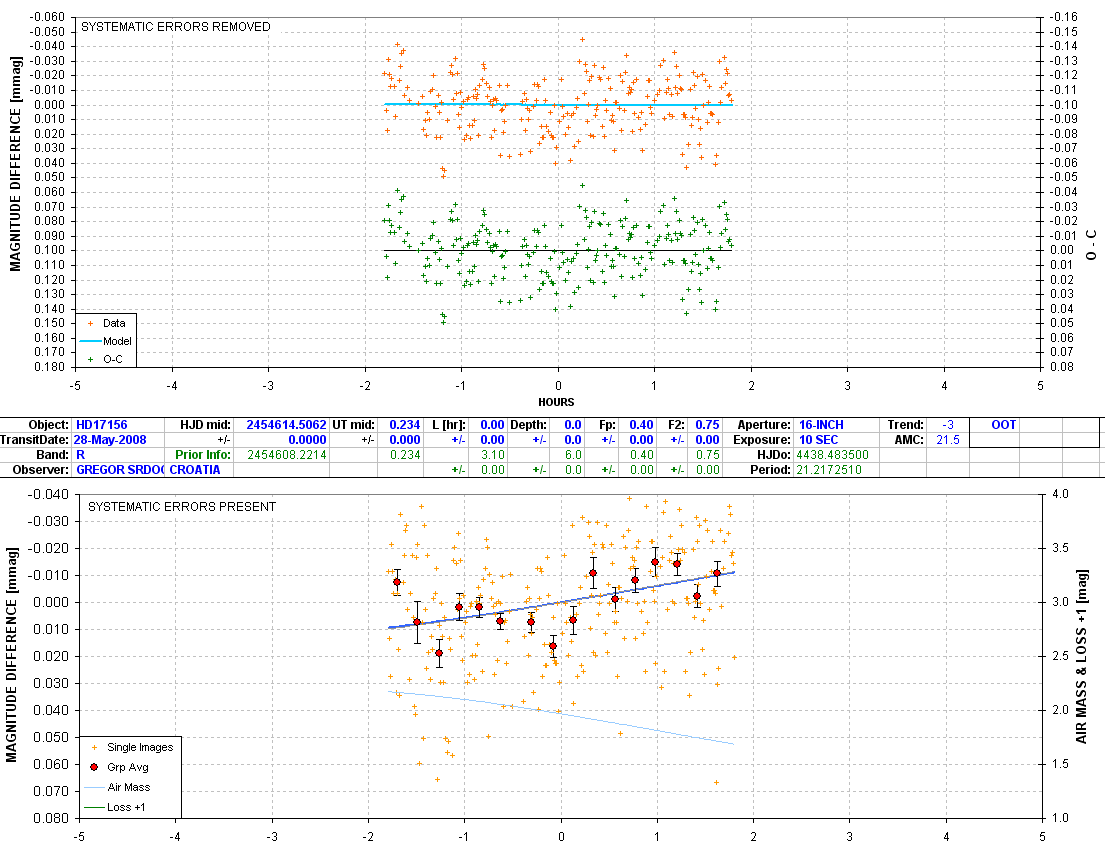
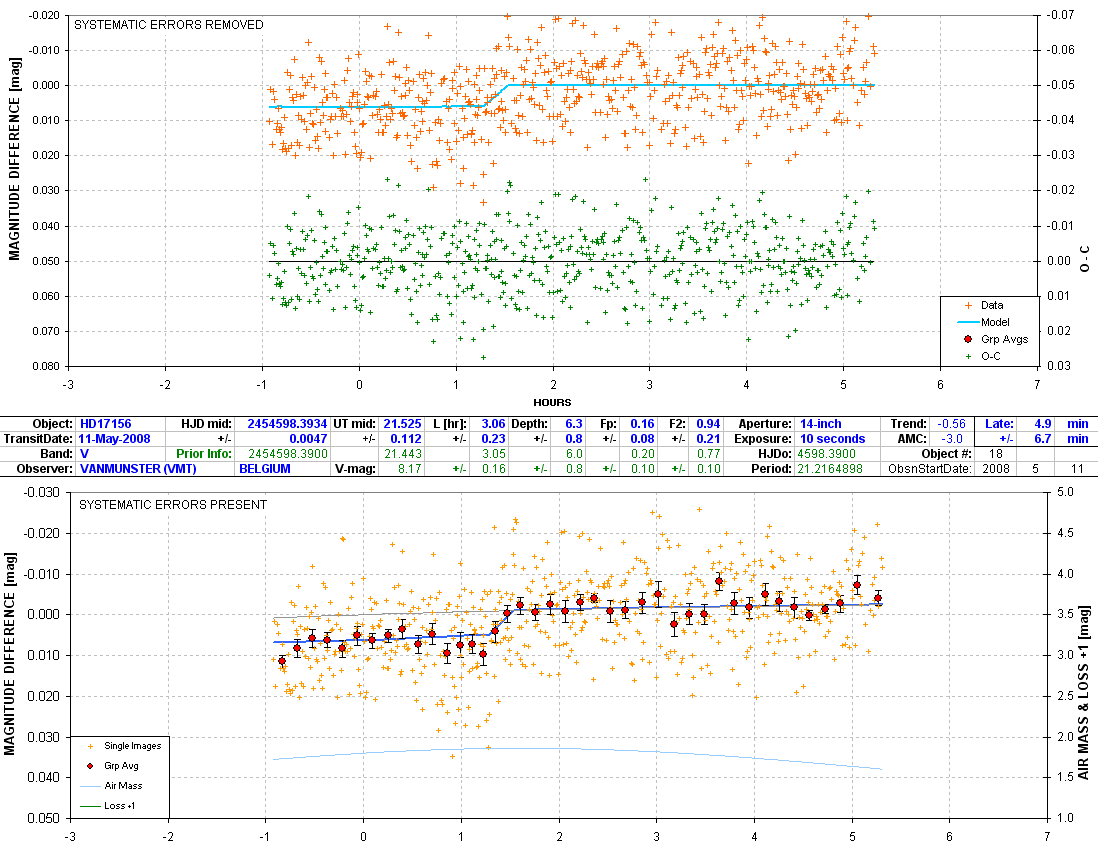
This transit feature should not have been observed!
Don't know why Tonny observed HD 17156 on this date, but it sure looks
like he found something unexpected.
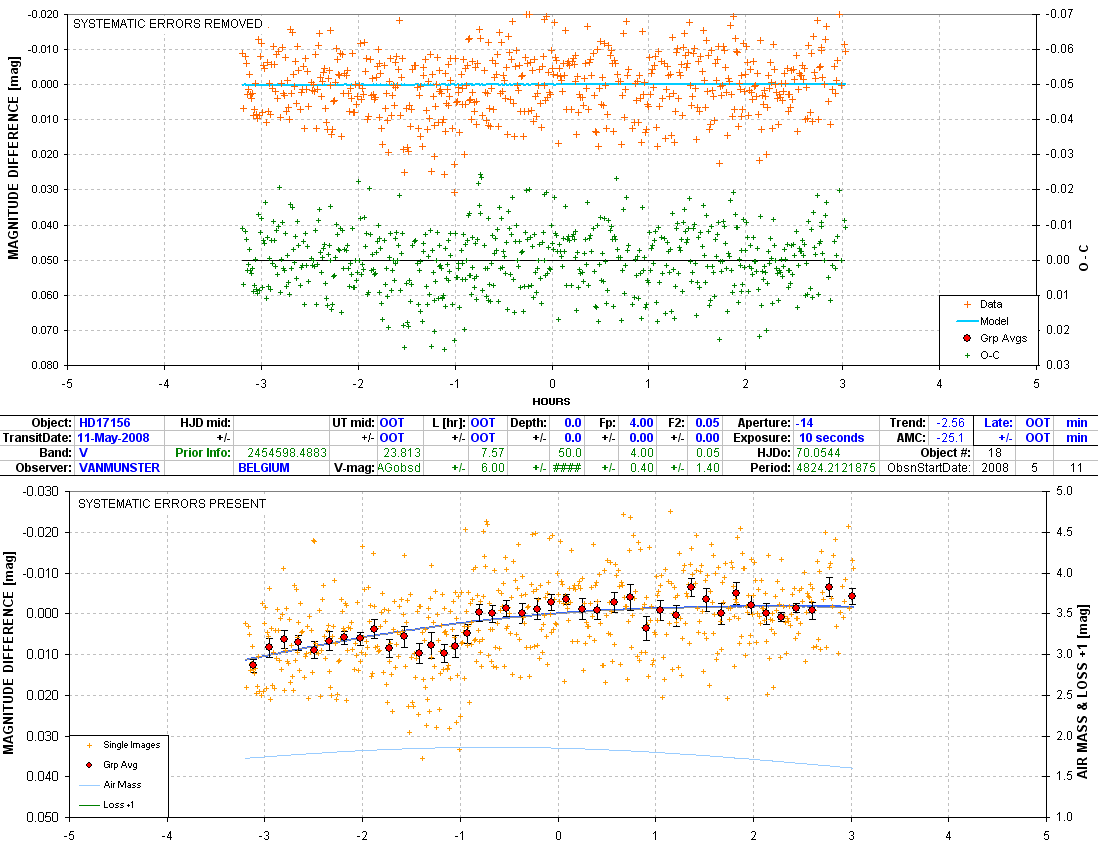
Here's a way to interpret the same data assuming there was no
transit feature.
Last May I posted the following LC plot on this page. It has
the correct mid-transit UT date but the HJD noted inthe plot is off
by one day. Instead of 4597.3927 it should be 4598.3927 (or, using
a more accurate length assumption, something closer to 4598.3934 (as noted
two LC plots above)
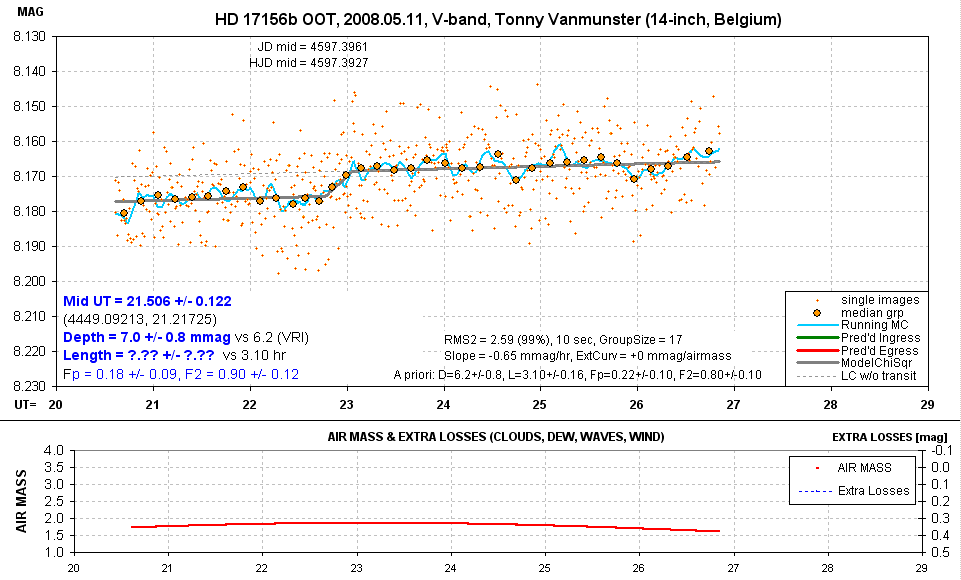
Tonny used an erroneous ephemeris to decide
on observing HD 17156 on this date. The preceding transit date
for "b" is 2008 04 30.50 and the following transit date for "b" is 2008
05 21.71. This transit feature occurs 11 days after a "b" transit and
10 days before the next "b" transit. Hmmm! What's going on here? Maybe
we should be observing this object at random times! (I repeat the above
caution: the plot has a 1day error in stated HJD for mid-transit; it
should read 4598.3937).
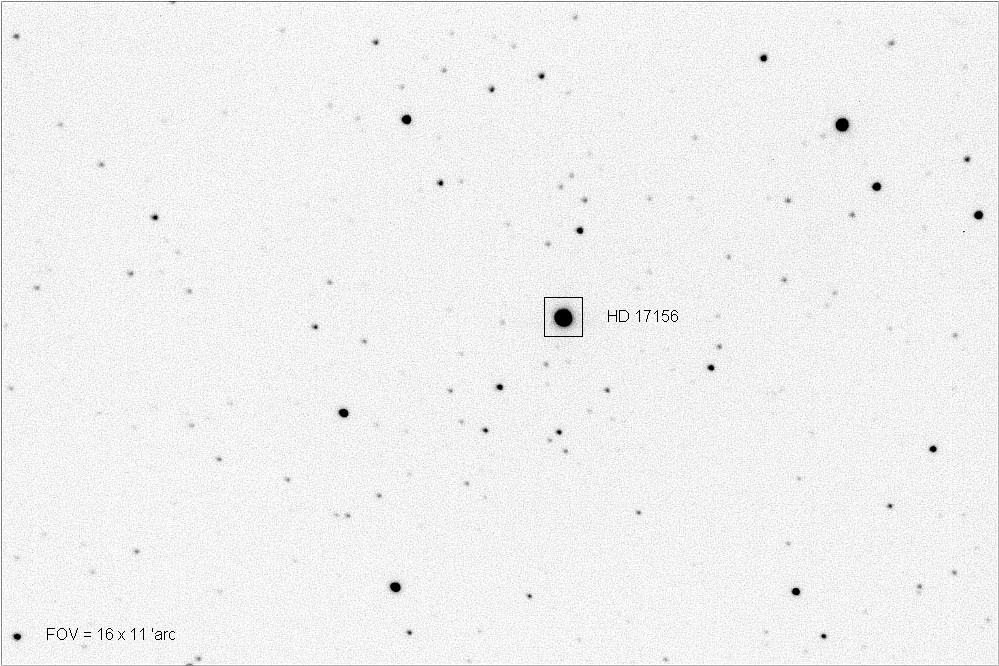
Discovery paper: Barbieri, M., 2007 hd17156b.pdf
Irwin et al, 2008 http://arxiv.org/abs/0801.1496
Winn et al, 2008 http://fr.arxiv.org/abs/0810.4725
Return to calling web page AXA
____________________________________________________________________
WebMaster: Bruce
L. Gary. Nothing on this web page is copyrighted. This site opened:
October 04, 2007. Last Update: 2009.11.30